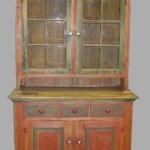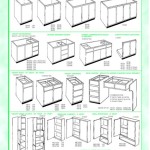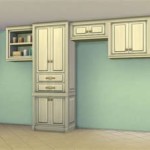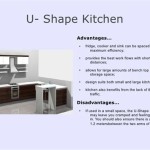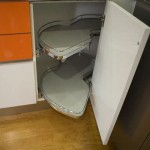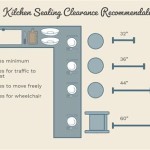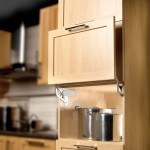Optimizing Kitchen Space: A Comprehensive Guide to Corner Unit Cabinets
Kitchen design often presents unique challenges, particularly when dealing with corner spaces. These areas, frequently relegated to dead space, can be transformed into highly functional storage solutions with the implementation of thoughtfully designed corner unit cabinets. The efficient utilization of corner units not only maximizes storage capacity but also enhances the overall flow and aesthetics of the kitchen.
Corner cabinets come in a variety of configurations, each offering distinct advantages depending on the specific needs and layout of the kitchen. Understanding the different types of corner units, their benefits, and installation considerations is crucial for creating a well-organized and visually appealing kitchen space.
Exploring Common Types of Kitchen Corner Cabinets
The market offers a wide array of corner cabinet solutions, each tailored to address specific spatial constraints and storage demands. Familiarizing oneself with the most common types is essential for making informed decisions about the best fit for a particular kitchen design. The selection process depends heavily on the size of the corner, the style of the kitchen, and the items that will be stored within.
Lazy Susans: One of the most popular and long-standing solutions, the Lazy Susan involves circular shelves that rotate within the cabinet, providing easy access to items stored in the back. These are particularly useful for storing pots, pans, and other frequently used items. Lazy Susans can be either full-circle or pie-cut, with the latter fitting more snugly into the corner space. The rotating mechanism allows for effortless retrieval of items, eliminating the need to reach deep into the cabinet and potentially knocking over other items.
Blind Corner Cabinets: These cabinets extend into the corner space, creating a "blind" area that is difficult to access. However, specialized pull-out systems can be installed within blind corner cabinets to make them more functional. These systems typically involve a series of shelves or baskets that can be pulled out of the cabinet, bringing the stored items into view and within reach. While they can be more expensive than simpler options, they dramatically improve the usability of the space.
Corner Drawers: Offering a more modern and streamlined look, corner drawers utilize the space with a series of angled drawers that conform to the shape of the corner. These drawers are typically designed with specialized hardware to ensure smooth operation and full extension. Corner drawers provide excellent visibility and accessibility to stored items, making them ideal for storing utensils, cookware, or food items. They are generally more expensive to install than other solutions, but their ergonomic benefits and sleek appearance make them a popular choice for contemporary kitchens.
L-Shaped Shelves: A simple and cost-effective option, L-shaped shelves are installed within the corner cabinet, providing a continuous surface for storage. While they do not offer the same level of accessibility as Lazy Susans or pull-out systems, they are suitable for storing larger, less frequently used items. L-shaped shelves are relatively easy to install and can be customized to fit the specific dimensions of the corner space. They are a good option for kitchens where budget is a primary concern.
Diagonal Corner Cabinets: These cabinets feature a diagonal front that extends from the corner to the adjacent walls. They provide a larger opening than traditional corner cabinets, making it easier to access items stored inside. Diagonal corner cabinets can be fitted with shelves, pull-out systems, or Lazy Susans to further enhance their functionality. Their angled design also adds visual interest to the kitchen.
The choice of corner cabinet depends on a variety of factors. Considering the frequency with which items will be used, the budget available, and the overall design aesthetic of the kitchen is key to selecting the right solution.
Advantages of Incorporating Corner Unit Cabinets in Kitchen Design
The inclusion of corner unit cabinets provides numerous advantages in kitchen design, extending beyond mere storage enhancement. These units contribute significantly to the overall functionality, aesthetics, and organization of the kitchen space, making them a valuable addition to any renovation or new construction project.
Maximization of Storage Space: The primary advantage of corner unit cabinets is their ability to utilize otherwise wasted space. By effectively integrating corner areas into the overall storage plan, these units significantly increase the total storage capacity of the kitchen. This is particularly beneficial in smaller kitchens where space is at a premium. Properly designed corner cabinets can accommodate a wide range of items, from cookware and appliances to pantry staples and serving dishes.
Improved Accessibility: Corner cabinets, particularly those equipped with Lazy Susans or pull-out systems, provide easy access to items stored in the back. This eliminates the frustration of reaching deep into the cabinet and potentially knocking over other items. The rotating or pull-out mechanisms bring the items into view and within reach, making it easier to retrieve what is needed. This improved accessibility is especially important for individuals with limited mobility or those who frequently use the items stored in the corner cabinet.
Enhanced Kitchen Organization: Corner unit cabinets can contribute to a more organized and efficient kitchen. By providing dedicated storage for specific items, these units help to declutter countertops and prevent items from getting lost in the back of the cabinet. This can lead to a more streamlined cooking process and a more pleasant overall kitchen experience. The use of dividers, organizers, and other accessories within the corner cabinet can further enhance organization and optimize space utilization.
Aesthetic Appeal: Corner cabinets can also enhance the aesthetic appeal of the kitchen. The diverse range of styles, finishes, and hardware options allows for seamless integration with the overall kitchen design. Corner drawers, in particular, can add a modern and sophisticated touch to the kitchen. Diagonal corner cabinets can also create visual interest and break up the monotony of straight lines. The careful selection of corner cabinet materials and finishes can complement the existing cabinetry and create a cohesive and visually appealing kitchen space.
Increased Property Value: A well-designed and functional kitchen is a significant selling point for any home. The inclusion of corner unit cabinets can increase the perceived value of the property by showcasing efficient use of space and attention to detail. Potential buyers appreciate the added storage and improved organization that corner cabinets provide. A well-maintained and aesthetically pleasing kitchen can be a decisive factor in a home sale.
These benefits illustrate the value of carefully planning and incorporating corner unit cabinets into kitchen designs. Prioritizing functionality and aesthetic integration can significantly improve the usability and enjoyment of the kitchen space.
Key Considerations for Installation and Maintenance
Proper installation and ongoing maintenance are crucial for ensuring the longevity and optimal performance of corner unit cabinets. Neglecting these aspects can lead to premature wear and tear, functional issues, and aesthetic degradation. A proactive approach to installation and maintenance will safeguard the investment and maximize the lifespan of the corner units.
Professional Installation: While some homeowners may attempt to install corner cabinets themselves, professional installation is highly recommended, particularly for complex systems like blind corner pull-outs or corner drawers. Professional installers have the expertise and tools to ensure that the cabinets are properly aligned, securely mounted, and functioning smoothly. This can prevent future problems such as misaligned doors, drawers that stick, or structural instability. The initial investment in professional installation can save time and money in the long run by avoiding costly repairs or replacements.
Accurate Measurements: Precise measurements are essential for selecting the correct size and type of corner cabinet. Before purchasing any corner unit, carefully measure the available space, taking into account any obstacles such as pipes or electrical outlets. It is also important to consider the swing radius of adjacent doors and drawers to ensure that they do not interfere with the operation of the corner cabinet. Accurate measurements will prevent the frustration of purchasing a cabinet that does not fit or function properly.
Hardware Considerations: The quality of the hardware used in corner unit cabinets, such as hinges, drawer slides, and pull-out mechanisms, is critical to their long-term performance. Opt for high-quality hardware made from durable materials that can withstand frequent use. Consider features such as soft-close mechanisms, which prevent slamming and reduce wear and tear. Regularly inspect the hardware for signs of wear or damage and replace any worn or broken parts promptly. Proper hardware maintenance will ensure smooth and reliable operation of the corner cabinet.
Weight Capacity: Be mindful of the weight capacity of the corner cabinet shelves and pull-out systems. Overloading the cabinet can lead to sagging shelves, damaged hardware, and even structural failure. Distribute the weight evenly and avoid placing excessively heavy items in the back of the cabinet. Consult the manufacturer's specifications for the recommended weight capacity and adhere to those guidelines. Regularly inspect the shelves and supports for signs of stress or damage.
Regular Cleaning: Regular cleaning is essential for maintaining the appearance and hygiene of corner unit cabinets. Wipe down the interior and exterior surfaces with a damp cloth and mild detergent on a regular basis. Pay particular attention to areas that are prone to spills or food debris. Use a vacuum cleaner with a brush attachment to remove dust and crumbs from hard-to-reach areas. Avoid using abrasive cleaners or scouring pads, as these can damage the finish of the cabinets. Regular cleaning will prevent the buildup of dirt and grime and prolong the lifespan of the corner units.
Moisture Control: Moisture can damage corner unit cabinets, particularly those made from wood or particleboard. Avoid placing wet or damp items inside the cabinet and promptly clean up any spills. Ensure adequate ventilation in the kitchen to prevent the buildup of moisture. Consider using a dehumidifier in areas with high humidity. Inspect the cabinets regularly for signs of water damage, such as warping, swelling, or mold growth. Address any moisture issues promptly to prevent further damage.
By adhering to these installation and maintenance guidelines, homeowners can ensure that their corner unit cabinets remain functional, aesthetically pleasing, and durable for many years to come. A proactive approach to care and maintenance will protect the investment and maximize the benefits of these valuable kitchen storage solutions.

Foolproof Storage Solutions For Corner Kitchen Cabinets

6 Of The Best Solutions For Kitchen Corner Units Fitzgerald Kitchens

5 Solutions For Your Kitchen Corner Cabinet Storage Needs

20 Smart Corner Cabinet Ideas For Every Kitchen
11 Corner Kitchen Cabinet Ideas For Storage Solution

11 Clever Corner Kitchen Cabinet Ideas Layout Design

Kitchen Corner Cabinet Ideas For Your Home Designcafe

6 Of The Best Solutions For Kitchen Corner Units Fitzgerald Kitchens

Kitchen Corner Cabinet Ideas For Your Home Designcafe

The Best Corner Cabinets For A Kitchen Remodel
Related Posts

